Dendrophthoe pentandra (L.) Miq.
| Etymology | Genus | Tree (Dendro); waste away (phthone); in reference to its hemi-parasitic habit on trees |
|---|---|---|
| Species | Five stamens | |
| Family | Loranthaceae | |
| Synonyms | Loranthus pentandrus L. | |
| Common Names | Malayan Mistletoe | |
| Status | Native: Common | |
| Form | Hemi-parasitic epiphyte | |
| Native Distribution | Eastern India, throughout Indochina, southern China, and Malesia | |
Diagnostics:
This is one of the "messier" mistletoe species we have here because its leaves are very variable in terms of their shapes and sizes. It is noteworthy to learn about the characters of the few other mistletoe species found in Singapore, since they are more distinct, and hence, allowing this to be deduced through the elimination method. The reddish-pink flowers and fruits will be an easy confirmation if spotted though. The young leaves are also frequently reddish.
Interesting Facts:
This is currently, the most common mistletoe in Singapore, at least from what I have seen in urban areas. They grow on practically almost every species of urban trees as far as I know (see below), and is abundantly spread throughout the city-state.
Despite them being a parasite, they are very important food resources for our two charismatic fauna; birds and butterflies. Sunbirds and flowerpeckers frequently visit the flowers for nectar, and also for their fruits. The seed slides off easily from the reddish skin, revealing the sticky flesh that adheres easily to whatever host plant the bird disperses on. The Malayan mistletoe is also the host plant for the Painted Jezebel caterpillar (Delias hyparete metarete). Seeing the butterfly fluttering about is a good indication that the mistletoe is in the vicinity!
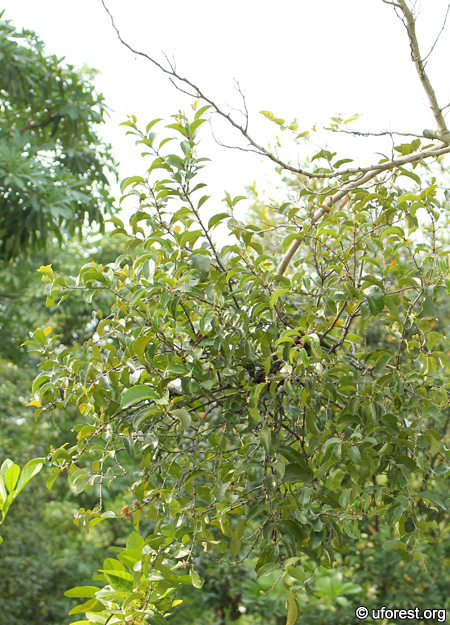
An extensive growth on a Cassia fistula.
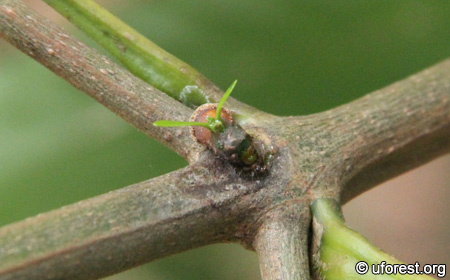
Germinating seed which I planted on a Vitex pinnata branch.
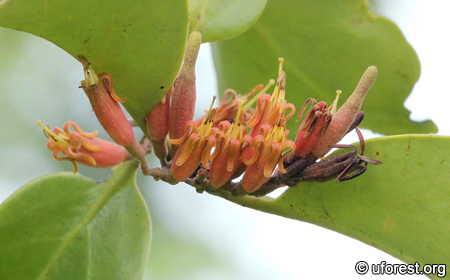
Reddish-pink flowers of the mistletoe.
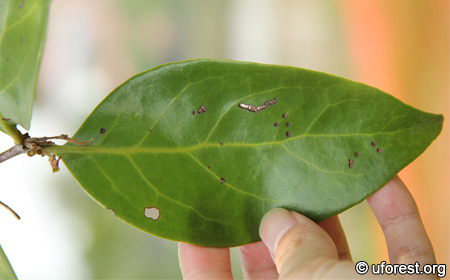
Leaf venation close-up. Note that the leaves can be variable in shape and size.
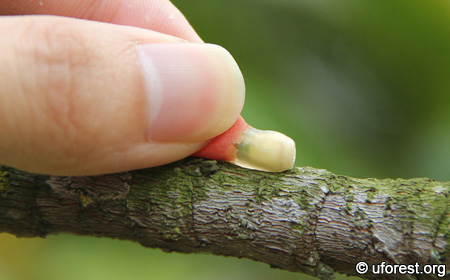
The seed slides out easily by pinching on the fruit.
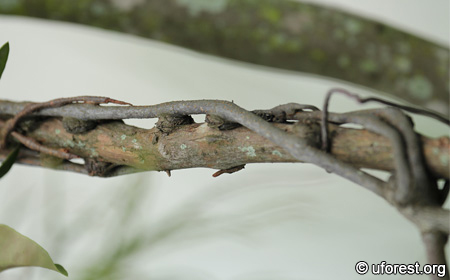
The stem trails along its host's branches and plants its suction-like haustoria.
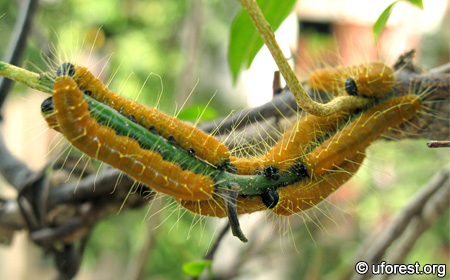
Painted Jezebel caterpillars devouring the mistletoe which grew on my dad's bonsai.
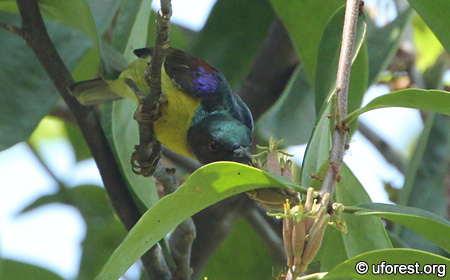
A male Brown-throated Sunbird drinking from the flowers.
Posted: 2012-10-06 / Modified: 2018-12-20